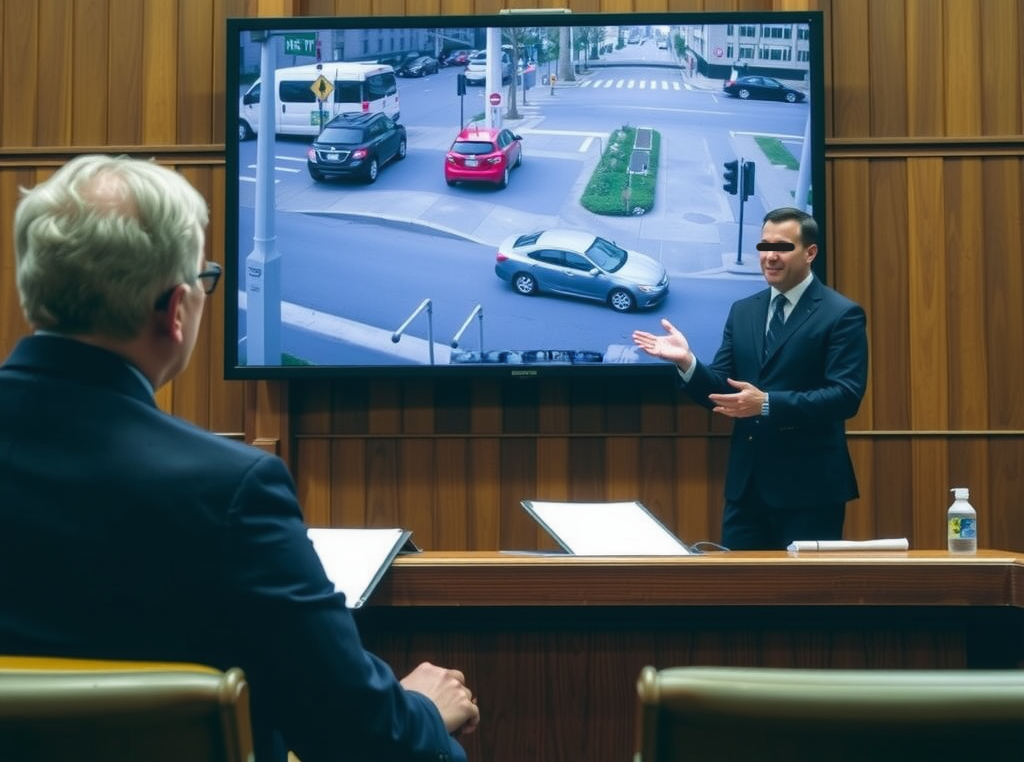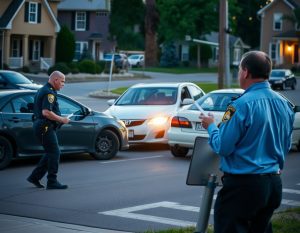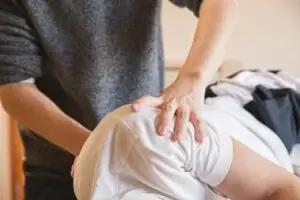Surveillance footage has become an essential element in personal injury investigations throughout Chicago. When you are injured in an accident that was not your fault, every detail can be critical to obtaining fair compensation. Video evidence, from dash cameras to security systems, can capture the true events of an accident, helping to prove negligence and liability.
At Costa Ivone, LLC, we understand that strong evidence is crucial for your personal injury claim. In this article, we explain how surveillance footage can be useful in personal injury investigations, discuss the relevant Chicago and Illinois laws that govern its use, and outline best practices for gathering and using video evidence to support your case.
Using Video Surveillance as Evidence
Video surveillance is a powerful tool in today’s legal landscape. It serves multiple purposes beyond crime prevention. In personal injury cases, video evidence can capture the precise moment an accident occurred, the conditions leading up to it, and the resulting injuries.
Examples of useful surveillance footage include:
- Doorbell and home security cameras: These cameras may record incidents at entrances or inside a building
- Traffic cameras: Often positioned at busy intersections or highways, these cameras can document motor vehicle accidents
- Dashcams: Mounted in vehicles, dashcams record the driver’s view, providing clear images of the accident scene
- Body-worn and police cameras: Recordings by law enforcement can offer impartial documentation of events
- Commercial and municipal surveillance: Security cameras in stores, parking lots, and on public property can capture evidence relevant to a case
Each type of footage can reveal critical information, such as the sequence of events, whether a driver lost control, or if hazardous conditions contributed to the accident.

The Importance of Surveillance Footage
Video evidence is invaluable in establishing what truly happened during an accident. Surveillance footage can:
- Capture key moments: It provides a visual record of the accident, showing how events unfolded in real time
- Support physical evidence: Photos, police reports, and medical records gain credibility when supported by video evidence
- Document contributing factors: Footage can reveal environmental conditions, such as poor lighting, wet pavement, or other weather impacts that contributed to the accident
- Clarify disputes: When there are conflicting witness statements or disputes over what occurred, video evidence can offer an objective account.
In personal injury cases, such evidence can help establish negligence by showing, for example, that a driver did not slow down in adverse weather or that a property owner failed to maintain safe conditions. This evidence is crucial when dealing with insurance companies that may attempt to minimize your claim.
Illinois Laws and Statutes on Surveillance Footage
In Chicago, the use of video surveillance in legal proceedings is governed by specific laws and statutes. It is important that any evidence you rely on complies with these regulations to be admissible in court.
Some of the key laws include:
- Illinois Freedom of Information Act (5 ILCS 140): This law ensures public access to government records, including certain surveillance footage on public property
- Illinois Vehicle Code (625 ILCS 5/): Portions of this code, along with the Illinois Comparative Negligence statute (65 ILCS 5/2-1116), help determine fault in motor vehicle accidents where surveillance footage may be used as evidence
- Local ordinances and bylaws: Chicago’s municipal codes may also regulate where and how surveillance cameras can be installed on public and private property
These statutes are designed to balance the need for accurate evidence with the protection of individual privacy rights. For instance, video obtained from a public street camera is generally admissible, while footage recorded in areas where there is a reasonable expectation of privacy may be subject to stricter scrutiny.
Legal Considerations When Using Surveillance Footage
When incorporating surveillance footage into a personal injury claim, several legal considerations must be observed:
- Consent and privacy: Illinois law requires that video recordings respect reasonable privacy expectations. Footage captured in public areas is typically admissible, but recordings made in private spaces where individuals expect privacy might be challenged.
- Chain of custody: It is vital to maintain an unbroken chain of custody. Detailed records must be kept showing how the footage was collected, stored, and transferred. Any gaps in this chain may lead to the evidence being ruled inadmissible.
- Accurate documentation: The video must be clearly timestamped and corroborated by other forms of evidence such as police reports and medical records.
- Legal compliance: All recordings must be made in accordance with the Illinois Electronic Communications Privacy Act and the Illinois Freedom of Information Act. This ensures that the evidence is legally sound and can be used in court.
By adhering to these requirements, personal injury attorneys can ensure that the surveillance footage plays a pivotal role in establishing liability and strengthening your claim.
Best Practices for Gathering and Using Surveillance Footage
If you are involved in an accident, it is important to secure all available video evidence.
Here are some steps to consider:
- Identify available cameras: Determine which cameras might have recorded the incident. This could include dashcams, traffic cameras, or surveillance systems on nearby buildings.
- Request copies of footage: Contact local authorities or property owners to obtain copies of relevant video recordings. Be sure to document your request.
- Preserve the evidence: Do not alter or delete any footage. Preserve the original files as they will serve as critical physical evidence.
- Document the chain of custody: Keep detailed records of how and when the footage was obtained. This includes noting the date, time, and person responsible for retrieving the video.
- Work with your attorney: Your personal injury lawyer will review the footage and advise you on how best to incorporate it into your case. He or she will ensure that all the evidence meets legal standards and can be presented in court.
Following these practices is essential to ensure that the video evidence is admissible and that it clearly demonstrates the factors that contributed to the accident.
How Personal Injury Attorneys Use Video Evidence
At Costa Ivone, LLC, our personal injury attorneys use surveillance footage as a cornerstone of our investigation process. We understand that every detail matters when determining liability.
Our team carefully reviews video evidence along with police reports, medical records, and eyewitness accounts to establish negligence and prove your case. From there, we take care of the following:
- Negotiation with insurers: We use surveillance footage to counter low settlement offers. Insurance adjusters may try to minimize your claim by arguing that your injuries are less severe. However, our attorneys can ensure that every piece of evidence supports your claim, pushing for a fair settlement.
- Courtroom presentation: When a case goes to trial, clear and accurate video evidence can be the difference between a fair result and an undervalued claim. We present the footage in a way that is easy to understand, highlighting key moments that establish fault.
- Comprehensive case evaluation: Our legal team provides a comprehensive case evaluation that includes a detailed analysis of all video evidence. This ensures that every aspect of your personal injury claim is thoroughly considered.
Common Challenges and Tactics by Insurers
Insurance companies sometimes use tactics that can undermine your personal injury claim.
One common strategy is to downplay the severity of the incident by focusing solely on limited video footage. They might argue that the surveillance footage does not capture the full extent of your injuries or that the accident occurred due to unavoidable circumstances.
Another tactic is to delay the process, hoping you will settle for a low settlement offer rather than pursue your case to its full extent.
These actions, while subtle, are aimed at protecting the insurer’s bottom line rather than ensuring you receive a fair settlement. It is essential to work with local attorneys who understand these tactics and can counter them effectively.
Our personal injury lawyers at Costa Ivone, LLC, are committed to handling every detail of your case, ensuring that your insurance claim is not undervalued and that all damages — including lost wages, medical expenses, and pain and suffering — are fully considered.
Let Us Help You Get the Compensation You Deserve
Surveillance footage plays a pivotal role in personal injury investigations in Chicago. Whether it comes from dash cams, traffic cameras, or security systems on private property, video evidence can provide an objective account of a motor vehicle accident, slip-and-fall incident, or other personal injury case.
By understanding how surveillance footage influences personal injury claims, you are better equipped to navigate the legal process. From gathering evidence to countering tactics by insurance adjusters, every step is crucial in securing fair compensation.
At Costa Ivone, LLC, our experienced personal injury attorneys are dedicated to fighting for your rights. We work tirelessly to ensure that every detail — from police reports and medical records to recorded surveillance footage — is used to build a strong case.
If you have been injured in an accident where surveillance footage can support your claim, do not hesitate to seek professional help. Time is limited to file a claim. Our local attorneys provide free consultations and comprehensive case evaluations to ensure that you receive a fair settlement. Trust our compassionate and fearless legal team to guide you through every step of your personal injury lawsuit.
Contact Costa Ivone, LLC, today to schedule a free consultation and let our confidential attorneys help you secure the compensation you deserve. Your path to justice starts with understanding your rights and gathering the evidence necessary to prove your case.



